Your cart is currently empty!
Tag: Equity
Schwab U.S. Dividend Equity ETF Should Be on Every Income Investor’s Radar
There is a huge temptation for income-focused investors to buy the highest-yielding stocks in an effort to boost the cash they generate from their portfolios. Anyone who has done this likely knows that buying based on yield alone can end up with you buying poorly run companies and result in diminished returns through often painful dividend cuts.
This helps make an exchange-traded fund (ETF) like Schwab U.S. Dividend Equity ETF (SCHD -1.11%) so interesting. Here’s why this income-focused ETF should be on your radar today.
What does Schwab U.S. Dividend Equity ETF do?
The very first thing that Schwab U.S. Dividend Equity ETF does when creating its portfolio is to limit its pool of stocks to just those that have 10 or more annual dividend increases behind them. (Real estate investment trusts are excluded from consideration.) This is a fairly stiff bar that only strong and consistent business can surpass. And it sets the stage for an approach that deftly attempts to balance yield with company quality.

Image source: Getty Images.
The second step for Schwab U.S. Dividend Equity ETF is to create a composite score for each company in its investable pool. The metrics used to create this score include cash flow to total debt, return on equity, dividend yield, and a company’s five-year dividend growth rate. Cash flow to total debt is a financial strength measure, return on equity is a measure of company quality, and dividend growth and yield are both income-related factors.
The scores are ranked from best to worst, and the 100 companies with the best scores get into the portfolio. The portfolio is weighted by market capitalization, so the largest companies have the biggest impact on performance. Like most ETFs, the portfolio is re-examined on a regular basis (yearly), so it always has the best investment candidates in the portfolio. You get all of this for a fairly small expense ratio of 0.06%.
Why is Schwab U.S. Dividend Equity ETF so attractive?
The simple reason why Schwab U.S. Dividend Equity ETF is a great income option is that it basically does exactly what you would do when looking for a dividend stock. Who wouldn’t want to own financially strong companies with good businesses that have high yields?
That said, the screens are more restrictive than simply picking the highest-yielding stocks. So the ETF’s yield is around 3.6%. That’s well above the 1.2% offered up by the S&P 500 index, but there are plenty of other ETFs out there with higher yields.
You might even want to buy some of those higher-yielding ETFs, too. But you’ll probably want the foundation of your portfolio to focus on financially strong companies with good businesses. This is what Schwab U.S. Dividend Equity ETF provides in a single investment and why it should be a core holding for dividend investors.
Given that it updates its portfolio annually, meanwhile, you never have to worry about it straying too far from its approach of picking good companies with attractive dividend yields. The best selection of dividend stocks will be packed into the ETF every year.
SCHD Dividend Yield data by YCharts
However, don’t make the mistake of thinking that Schwab U.S. Dividend Equity ETF is only for ETF investors. You can use this as a foundation on which to build an individual stock portfolio, too. Just make sure that you aren’t unknowingly doubling up on investments that may be in the ETF’s portfolio (unless that’s what you want to do).
Schwab U.S. Dividend Equity ETF is a buy and long-term hold
It isn’t often that investment options as attractive as Schwab U.S. Dividend Equity ETF come along. And sometimes when they do show up, they get bid up to the point where they are no longer attractive. But because of the nature of exchange-traded funds, that can’t happen with Schwab U.S. Dividend Equity ETF.
The key is to understand the approach this dividend ETF takes and, if you see the value on offer, buy it and hold it forever. And don’t worry too much about the timing of your purchase, especially if you are still in the process of building your nest egg. If that’s the case, you should probably just keep putting money into the ETF whenever you can so you can benefit from the long-term appeal of its investment approach.
As an income investor, it’s crucial to have a diversified portfolio that includes dividend-paying stocks. One way to achieve this is by adding the Schwab U.S. Dividend Equity ETF to your radar.This ETF offers exposure to high-quality U.S. companies that have a consistent track record of paying dividends. With a low expense ratio and a solid performance history, the Schwab U.S. Dividend Equity ETF is a great option for investors looking to generate passive income through dividends.
By including this ETF in your portfolio, you can benefit from the potential for capital appreciation while also receiving regular dividend payments. This can help you build a steady stream of income over time, making it a valuable addition to your investment strategy.
Overall, the Schwab U.S. Dividend Equity ETF is a reliable option for income investors looking to diversify their portfolios and generate passive income through dividends. Make sure to keep this ETF on your radar as you continue to build and grow your investment portfolio.
Tags:
Schwab U.S. Dividend Equity ETF, income investing, dividend investing, ETF investing, investment strategy, income generation, dividend stocks, dividend ETFs, Schwab ETFs, passive income, financial planning, wealth building, income portfolio, stock market, dividend yields, investment opportunities
#Schwab #U.S #Dividend #Equity #ETF #Income #Investors #RadarChallenges and Opportunities: Navigating artificial intelligence and equity investing
Optimisation
In finance, optimisation refers to the process of finding the best solution for a particular problem subject to a set of constraints. In quantitative equity investing this technique is used in portfolio construction, to find the optimal portfolio that aims to maximise the expected return while minimising risk.
An example of a simple optimisation problem is for instance: if someone was organising a party, what is the optimal number of pizzas, cakes and drinks they should order? We can solve this with our brains, relying on experience and the back of an envelope to do some simple calculations.
But in finance, if we wanted to build a portfolio of 100 stocks from the S&P 500, there is an almost infinite number of combinations.
The optimiser can find the optimal portfolio in the risk-return space, searching through the endless number of possible portfolios until it finds the best possible combination of stocks that should deliver the best outcome.
But this is not new technology. To find the optimal portfolio the optimiser uses the Lagrange multiplier method. This method was first published in 1806 by an Italian mathematician, Joseph-Louis Lagrange. The technique involves introducing a new variable (the Lagrange multiplier) for each constraint in the optimisation problem and forming a new function called the Lagrangian.
Then by taking the partial derivatives of the Lagrangian the optimiser has directions on which way to look for the solution, without having to check each of the almost infinite possible combinations. These techniques play a crucial role in improving model performance in ML, from feature selection and tuning to minimising the loss function.
In today’s rapidly evolving financial landscape, the intersection of artificial intelligence and equity investing presents both challenges and opportunities for investors. As AI technology continues to advance, it is becoming increasingly integral to the investment process, offering new ways to analyze data, identify trends, and make more informed decisions.However, with the rise of AI in investing comes a host of challenges. One of the main concerns is the potential for bias in AI algorithms, which can lead to unintended consequences and unfair outcomes. It is crucial for investors to be aware of these biases and take steps to mitigate them in order to ensure fair and equitable investment practices.
On the flip side, AI also presents numerous opportunities for investors looking to gain a competitive edge in the market. By harnessing the power of AI-driven analytics and predictive modeling, investors can uncover hidden patterns and insights that may not be apparent through traditional methods. This can lead to more accurate forecasts, better risk management, and ultimately, higher returns on investment.
In navigating the complex landscape of artificial intelligence and equity investing, it is imperative for investors to stay informed, remain vigilant against bias, and constantly adapt to new technologies and methodologies. By embracing AI as a tool to enhance decision-making processes, investors can position themselves for success in an increasingly data-driven and competitive market.
Tags:
- Artificial intelligence
- Equity investing
- Challenges
- Opportunities
- Navigating AI
- Investment strategies
- Financial technology
- AI in finance
- Equity markets
- Investment trends.
#Challenges #Opportunities #Navigating #artificial #intelligence #equity #investing
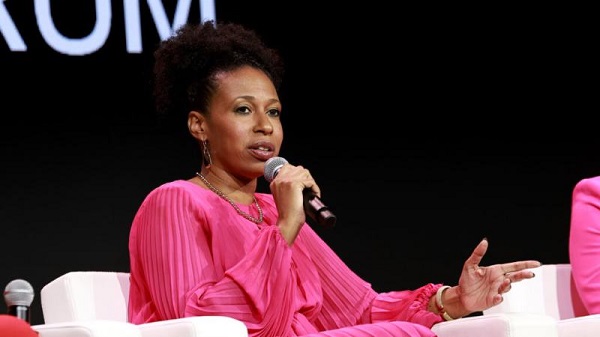
Aletha Maybank to Step Down as AMA’s Chief Health Equity Officer
Dr. Aletha Maybank, the American Medical Association’s (AMA) inaugural Chief Health Equity Officer, will be stepping down from her role at the end of 2024 after more than five years of service.
During her tenure, Maybank was at the forefront of initiatives that addressed health disparities and promoted equity within the medical community.
Maybank’s departure marks a significant turning point for the AMA, which has yet to announce a successor.
Under her leadership, the AMA launched several critical programs that focused on increasing diversity in the medical workforce and enhancing access to care for marginalized communities. Her work contributed to shaping the AMA’s health equity policies and addressing the social determinants of health that disproportionately impact underrepresented groups.
In a heartfelt statement shared on Instagram, Dr. Maybank expressed her gratitude for the support she received throughout her career.
She thanked the AMA management team, the Board of Trustees, the House of Delegates, and members, both past and present, for providing the foundation on which to build and for offering coverage during challenging moments.
“Thank you to AMA management team, the Board of Trustees, the House of Delegates, and members, both past and present, for providing the foundation on which to build and for providing coverage during moments of resistance,” Maybank wrote. “Thanks to those I have developed great relationships also engaged in this work whether implicitly or explicitly; many I now consider friends.”
She also thanked her family and friends for their unwavering support. “Thanks to my family and friends who have stood with me and for me. I am blessed—the foundation is sturdy and the harbor safe.”
Looking ahead, Maybank revealed her next phase will involve diving into the intersection of narrative, art, and health.
She shared that her immediate focus will be to care for her aging mother and take space to reflect on how to care for herself as a caregiver. She also expressed a desire to curate her next chapter in a way that is meaningful and impactful while offering advice and support to others navigating the year ahead.
“My next phase will land in the pool of narrative, art, and health. However, my immediate ‘next up’ is space to care for my aging mother, space to figure out how to care for the caretaker—myself, space to curate my next phase into what is meaningful and impactful, and some space to support and advise some of y’all to help navigate through 2025+.”
Dr. Maybank’s departure will be felt across the healthcare and public health sectors, but her legacy of advocating for health equity is expected to endure through the programs and policies she helped implement.
The AMA remains committed to its mission of advancing health equity, with plans to continue driving meaningful change in the years to come.
Also Read
SoundHound AI Inc. Stock Analysis: A 2024 Surge and What’s Ahead for 2025
Why Sirius XM Stock is Worth Buying in 2025: A Strategic Investment Perspective
The American Medical Association (AMA) announced today that Aletha Maybank will be stepping down from her role as Chief Health Equity Officer. Maybank has been a leading advocate for health equity within the organization, working tirelessly to address disparities in healthcare access and outcomes for marginalized communities.During her tenure, Maybank has spearheaded numerous initiatives aimed at advancing health equity, including the establishment of the Center for Health Equity and the creation of the AMA’s Health Equity Task Force. She has been a vocal advocate for policies that promote equity in healthcare, and has worked to raise awareness of the social determinants of health that contribute to disparities in health outcomes.
Maybank’s departure is a loss for the AMA and the broader healthcare community, but her legacy will continue to inspire future efforts to achieve health equity for all. The AMA has expressed its gratitude for Maybank’s leadership and dedication, and is committed to continuing the work she has started.
We wish Aletha Maybank all the best in her future endeavors, and thank her for her tireless efforts to advance health equity in our healthcare system.
Tags:
- Aletha Maybank
- AMA Chief Health Equity Officer
- Health equity
- Aletha Maybank resignation
- American Medical Association
- Health equity leadership
- Healthcare diversity
- Aletha Maybank career
- AMA news
- Health equity advocate
#Aletha #Maybank #Step #AMAs #Chief #Health #Equity #Officer
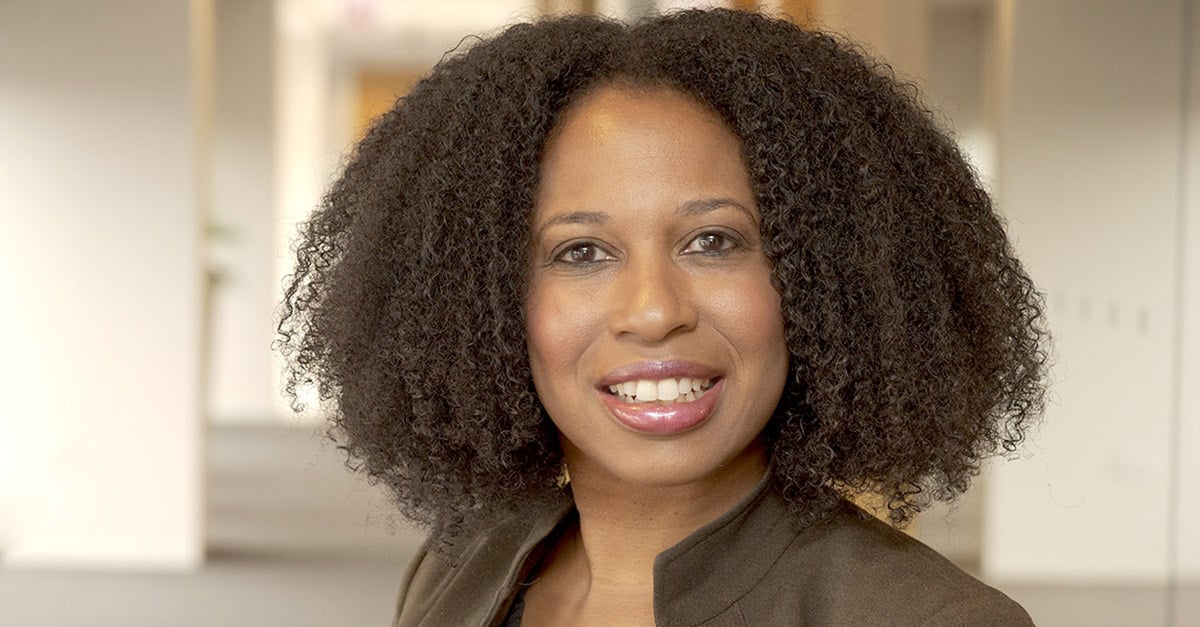
AMA’s first chief health equity officer to depart at year’s end
The AMA’s inaugural chief health equity officer, Aletha Maybank, MD, MPH, will depart the organization at the end of 2024 following a successful five-year and a half year tenure where she led the creation of the AMA’s Center for Health Equity, strengthened AMA’s national presence and voice on health equity, and led the development of an ambitious strategic plan that embedded equity across the work of the organization—including its management team, House of Delegates, Board of Trustees, and members.
As someone who has led a long and successful career in supporting organizational change management and top-level leadership in equity, Dr. Maybank intends to take time and pursue her creative interests and talents at the intersection of art and health. The AMA will soon begin the process to fill the role of AMA chief health equity officer, who will carry forward the organization’s commitment to health equity and build on the progress made over the past five and a half years.
“Dr. Maybank has been a true champion and advocate for health equity both inside the AMA and in shaping our health system. She created a strong, strategic foundation for this work to continue over the long term,” AMA Executive Vice President and CEO James L. Madara, MD, said. “We thank her for taking on this difficult work, for enduring sometimes harsh criticisms, for standing tall for her equity peers across the nation, and for working diligently with passion and integrity across the AMA and medicine to advance health equity throughout the country.”
The national conversation around health equity—and the recognition of racism as a significant threat to public health—has changed dramatically since Dr. Maybank joined the AMA in 2019. The COVID-19 pandemic brought greater awareness of the impact of structural and social drivers of health on everyone and more specifically to the inequitable systems across the health ecosystem and country that contribute to and produce worse health outcomes for historically marginalized and excluded people and communities.
“The American College of Physicians is appreciative of Dr. Maybank’s leadership, equanimity, and data driven approach, paired with her ability to view all through a human lens, that has helped move health equity forward in the U.S.,” said Darilyn Moyer, CEO of the American College of Physicians (ACP). “The work she has led at the AMA’s Center for Health Equity and in collaboration with the ACP and others has contributed greatly to our mutual goal of advancing equity throughout health care, where everyone has a fair and just opportunity to attain their highest level of health.”
At the 2018 Annual Meeting, the AMA House of Delegates passed policy that called on the organization to more clearly define health equity and to outline a strategic framework toward achieving optimal health for all people. These actions paved the way for the creation of the AMA chief health equity officer position and, ultimately, the AMA Center for Health Equity (The Center). In 2020, the AMA, led by a pledge from the Board of Trustees, officially recognized racism as an urgent threat to public health, and race as a social, and not a biological, construct.
“At its core, health equity work is about inspiring each other to care more and to do better, to witness and affirm the humanity of all,” said Dr. Maybank, who before joining the AMA was a deputy commissioner and the founding director of the Center for Health Equity in New York City Health Department. “Health equity is about manifesting the will for and being open to the need for change to shift resources and investments when needed. This is work the AMA will continue and has a plan in place to help achieve it.”
Under Dr. Maybank’s guidance and leadership, The Center has become a powerful voice on topics related to health equity, systemic and historical racism in medicine, diversity, equity and inclusion efforts in the health care industry, and a valued partner with like-minded organizations seeking to create a more just and equitable health care system. The AMA launched its first Strategic Plan to Embed Social Justice and Advance Health Equity in 2021, and issued a new two-year plan earlier this year, which documented progress made to advance health equity.
During Dr. Maybank’s tenure, the AMA has provided a platform for the organization to engage in more open and honest conversations about its own past failings and exclusionary practices that have contributed to some of the inequities that persist in medicine today and has expanded education opportunities for physicians, residents and students in numerous ways, including:
The AMA also collaborated closely with leading health equity and social justice organizations to help launch several important initiatives, including:
“Dr. Aletha Maybank has been a transformative force for health equity in the United States. As the chief health equity officer of the AMA and founder of the Center for Health Equity, she has consistently demonstrated visionary leadership and harnessed the power of collaboration to enable healthcare providers to more effectively address health inequities and their root causes,” said Daniel E. Dawes, founding dean for the School of Global Health at Meharry Medical College and author of The Political Determinants of Health. “From developing and launching exceptional programs such as the Medical Justice in Advocacy Fellowship to equip the next generation of medical professionals to champion health equity and justice, to crafting the comprehensive health equity communications guide, ‘Advancing Health Equity: A Guide to Language, Narrative, and Concepts,’ among so many innovative accomplishments, she has set a new benchmark for advancing inclusivity and cultural humility for all healthcare professionals around the globe. Dr. Maybank’s enduring legacy at the AMA will continue to serve as a beacon of inspiration, guiding future health leaders as they work to achieve optimal health for all.”
The AMA’s work to advance health equity has also been woven into the organization’s ongoing advocacy efforts at the federal and state levels. Policy changes have advanced national nutrition guidelines, eliminated harmful race-based clinical algorithms, and helped extend Medicaid coverage for a full year postpartum with passage of the American Rescue Plan Act in 2021 and Consolidated Appropriations Act in 2023.
Health equity has also been advanced by the AMA’s advocacy in the courts, which helped uphold the Indian Child Welfare Act with a U.S. Supreme Court ruling in Haaland v. Brackeen, fought to protect pregnant women from being criminalized for a substance use disorder, and enforce a ban on dangerous and highly addictive menthol cigarettes. The AMA’s advocacy also helped remove the Food and Drug Administration’s discriminatory restrictions on blood donations by men who have sex with men.
“Many health organizations have called attention to deep inequities and pushed for a more equity health system much longer than the AMA, but thanks to Dr. Maybank’s leadership, we are a better partner and ally in breaking down barriers to improve the health of all people and communities,” Dr. Madara said. “Dr. Maybank’s tremendous courage and powerful voice has made us a credible partner in this work, and the AMA would not be where it is today without her powerful leadership and strategic guidance.”
I’m excited to announce that AMA’s first chief health equity officer will be departing at the end of the year. Join us in celebrating their incredible contributions to advancing health equity and their commitment to creating a more inclusive and equitable healthcare system. Have any questions for them before they go? Drop them below and they’ll be answering them in an upcoming AMA session! #HealthEquity #AMA #ChiefHealthEquityOfficer #AMAChiefHealthEquityOfficer #InclusiveHealthcare.
Tags:
- AMA
- Chief health equity officer
- Departure
- Year’s end
- American Medical Association
- Healthcare equity
- Health disparities
- Leadership changes
- Medical organization
- Health equity initiatives
#AMAs #chief #health #equity #officer #depart #years
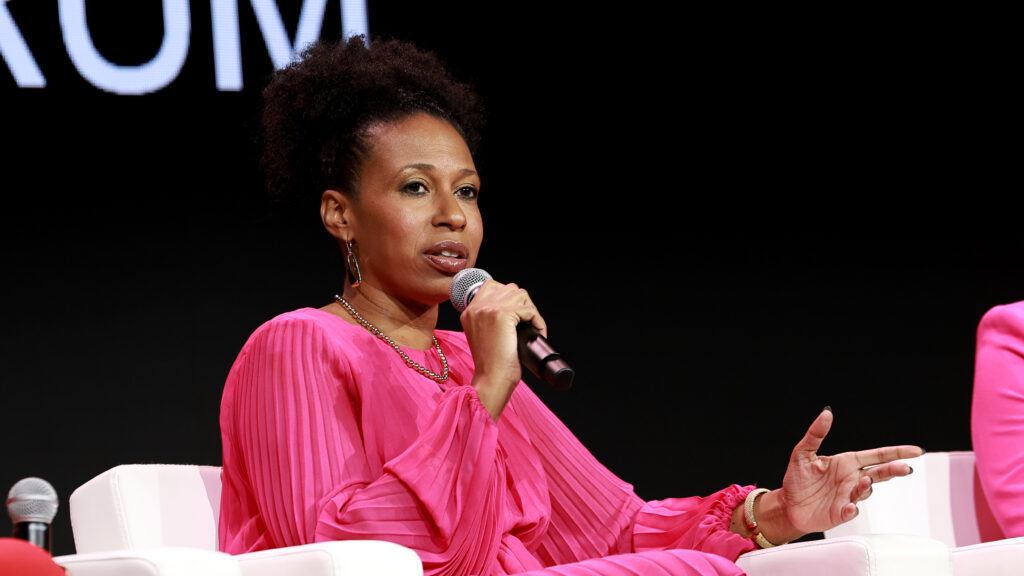
Aletha Maybank to step down as AMA’s chief health equity officer
Aletha Maybank, who became the American Medical Association’s first chief equity officer five and half years ago, is leaving the organization.
Maybank, a widely respected health equity advocate, led the organization to reckon with its own racist past. The AMA excluded Black physicians from membership for more than a century and paid scant attention to racist practices of one of its own presidents, J. Marion Sims. In a 2021 report that Maybank oversaw, the AMA admitted to a long litany of troubling actions, including that Sims tested surgical procedures on Black women without anesthesia and that AMA policies wanted to ban “irregular-bred pretenders,” as they termed Native American doctors, from practicing medicine.
During Maybank’s tenure, the 177-year-old organization took accountability for playing a role in the nation’s deep racial health disparities and vowed to help dismantle white supremacy and racism within medicine. To many, such work was considered long overdue.
“Dr. Maybank really brought the AMA into the modern era in terms of grappling with its legacy and taking on the need to repair the ways organized medicine has failed to care for African Americans in this country,” said Mary Bassett, director of the François-Xavier Bagnoud Center for Health and Human Rights at Harvard University.
The departure may come as a surprise to many health equity advocates who have lauded Maybank’s work and also acknowledged the difficult and political nature of her position. She said Monday the decision was her own and came at a time she was hoping to craft a new venture — and an entirely new way — to work on health equity and improving medicine outside of a large organization. “Of course it’s bittersweet,” Maybank told STAT of her decision to step down. “I’m proud of the work.”
Maybank said she plans to launch a new venture at the intersection of art and medicine that will focus on the emotional power of narrative and storytelling to change people’s attitudes and will, and that the idea for this new path was borne from the work she has done at the AMA. “That’s one thing I’ve learned,” she said. “The will to do something to change the system comes from a deeper emotional context.”
Maybank’s stepping down comes at a time when many in the field of health equity are facing challenges to their work, including the Supreme Court’s recent ruling that colleges and universities cannot use race as a primary factor in admissions, something that could decrease the number of Black medical students over time, and other legal efforts to dismantle and defund programs focusing on diversity, equity, and inclusion.
“I’m worried. Following the murder of George Floyd, we saw a real sea change in this country and in organized medicine and public health in particular to confront racism. The backlash has been so swift it has really surprised me” said Bassett. “I’m worried that whoever takes this on next will be confronting a much less receptive world.”
The AMA said in its statement it would begin a search to find a replacement. Hinting at the sometimes difficult situations Maybank found herself in while confronting racism head on from within a long politically conservative organization, James Madara, AMA’s executive vice president and CEO in a statement thanked Maybank for taking on difficult work and “for enduring sometimes harsh criticisms.”
Maybank’s work to create change at the AMA has been praised by many in the field of health equity. “That work is hard to do in a longstanding institution where policies are really baked in,” said Félix Manuel Chinea, director of health equity and inclusion strategy at Doximity. “Getting all these people who hold power at a large organization to be on board with this work is a testament to her.”
Maybank acknowledged that some working in health equity might feel deflated by seeing her leave such a powerful position, but said she would continue working on equity and “optimal health for all” in her new work and that others would continue her work at the AMA. “That message of persistence doesn’t change,” she said. Previously, Maybank was deputy commissioner and the founding director of the Center for Health Equity at the New York City Health Department.
She said she believed the AMA remained deeply committed to the anti-racist work she pushed within the organization and praised its leaders, specifically the AMA House of Delegates, for agreeing to create her position in the first place and supporting her work. “That advocacy often doesn’t get seen,” she said.
In an interview with STAT last year, Maybank discussed her achievements and said one way she creates hope is by reminding people “we’re part of a legacy of people who believe and know that they deserve dignity … that legacy is a beautiful legacy. It’s a painful legacy, and an exhausting legacy.”
The American Medical Association (AMA) has announced that Aletha Maybank will be stepping down from her role as the organization’s chief health equity officer. Maybank has been a prominent leader in the field of health equity, working to address disparities in healthcare and improve outcomes for marginalized communities.During her time at the AMA, Maybank has been instrumental in developing strategies to promote health equity and reduce barriers to care. She has worked to increase diversity in the medical workforce, advocate for policies that address social determinants of health, and elevate the voices of communities that have been historically underserved.
Maybank’s departure is a loss for the AMA, but her legacy of advocacy and commitment to health equity will continue to inspire others in the field. The organization has expressed its gratitude for her contributions and wishes her the best in her future endeavors.
As the search for a new chief health equity officer begins, the AMA remains dedicated to advancing health equity and ensuring that all individuals have access to quality, equitable healthcare. Maybank’s leadership will be missed, but her impact will undoubtedly endure.
Tags:
- Aletha Maybank
- American Medical Association
- Chief Health Equity Officer
- Health Equity
- Diversity in Healthcare
- AMA Leadership
- Health Disparities
- Healthcare Advocacy
- Aletha Maybank Resignation
- AMA Health Equity Initiatives
#Aletha #Maybank #step #AMAs #chief #health #equity #officer

Cedars-Sinai builds community partners to address health equity
Cedars-Sinai is expanding its long-standing commitment to local nonprofits through grantmaking and shared learning opportunities, as a way to promote greater health equity in the areas of homelessness and housing, access to care and other community response categories.
Each year, Cedars-Sinai provides grant funding – $27.2 million during the last fiscal year – as part of its community outreach initiatives supporting dozens of nonprofit organizations across Los Angeles. The medical center was recognized as the largest non-foundation grantmaker to L.A. County charities in 2023, as part of the Los Angeles Business Journal’s annual Corporate Philanthropy rankings.
In the latest sign of its commitment, Cedars-Sinai recently convened more than 80 nonprofit grant recipients to culminate a multi-year Health Equity Grant Program. The gathering featured groups including L.A. Family Housing, the Venice Family Clinic and Homeboy Industries –nonprofits working to improve the lives and opportunities of Angelenos.
“All of these organizations represent a crucial part of the picture of services offered in our L.A. communities and are deeply committed to equitable health outcomes in partnership with Cedars-Sinai,” said Arthur J. Ochoa, senior vice president of advancement and chief advancement officer for Cedars-Sinai.
The grant program and its capacity-building efforts address health equity by examining the changing landscapes of Cedars-Sinai’s community partners, including those centered on recruitment and retainment of a diverse workforce, data intelligence to inform equity outcomes and adherence to healthcare policies to provide high-quality services. The recent convening of nonprofits underscored this shared mission.
“Gathering to celebrate the work of these nonprofits and troubleshoot issues impacting them provides invaluable insights for identifying actionable solutions that make a difference across the health and social service sectors,” said Erin Jackson-Ward, executive director of grantmaking and social impact for Cedars-Sinai.
Moving the needle toward greater equitability in care is also a credit to alliances formed across the Cedars-Sinai Health System, which is expanding its health equity efforts across the L.A. region and beyond.
In 2022, Cedars-Sinai launched a Black Birth Equity program, providing grants to local, community-based organizations focused on reducing inequities in Black maternal and infant health. A groundbreaking hypertension study led by Cedars-Sinai’s Smidt Heart Institute, starting in 2015, also was the first to scientifically prove the effectiveness of bringing medical treatment directly to patrons of Black barbershops.
“The medical center is working to galvanize partnerships across the community to ensure that we are delivering inclusive care and addressing structural disparities,” said Dr. Christina Harris, vice president and chief health equity officer for Cedars-Sinai.
For information, visit cedars-sinai.org.
Cedars-Sinai, one of the leading hospitals in Los Angeles, is taking a proactive approach to addressing health equity in the community. By partnering with local organizations and community leaders, Cedars-Sinai is working to ensure that all individuals have access to quality healthcare services regardless of their socioeconomic status.Through these partnerships, Cedars-Sinai is able to better understand the unique needs and challenges faced by different communities. By collaborating with community organizations, the hospital is able to provide culturally competent care and support services that are tailored to the specific needs of each community.
By building strong community partnerships, Cedars-Sinai is not only addressing health disparities but also working to create a more equitable healthcare system for all. Together, with their community partners, Cedars-Sinai is making strides towards improving the health and well-being of all individuals in the Los Angeles area.
Tags:
Cedars-Sinai, health equity, community partners, healthcare initiatives, Los Angeles healthcare, community health, healthcare partnerships, healthcare access, addressing disparities, health equity programs, community health initiatives, Cedars-Sinai collaborations, healthcare outreach, improving health equity
#CedarsSinai #builds #community #partners #address #health #equity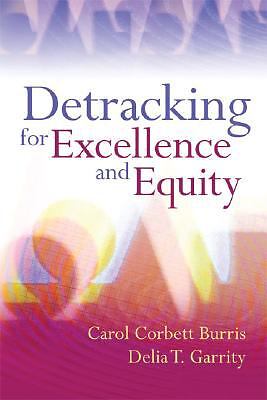
Detracking for Excellence and Equity

Detracking for Excellence and Equity
Price : 3.99
Ends on : N/A
View on eBay
Detracking for Excellence and Equity: A Path to Success for All StudentsDetracking, the practice of moving away from ability-based grouping in schools, has gained traction in recent years as educators and researchers alike recognize the detrimental effects of tracking on student achievement and equity. By detracking, schools can create a more inclusive and equitable learning environment that promotes excellence for all students, regardless of their background or perceived abilities.
Research has shown that tracking often perpetuates inequality by disproportionately placing low-income and minority students in lower-level classes with fewer resources and less rigorous curriculum. This can lead to a self-fulfilling prophecy, where students internalize the belief that they are not capable of success, ultimately hindering their academic growth and potential.
Detracking, on the other hand, allows for all students to have access to challenging and engaging curriculum, regardless of their prior academic performance. By eliminating ability-based grouping, detracked schools can promote a growth mindset among students, encouraging them to strive for excellence and reach their full potential.
Furthermore, detracking can help to close the achievement gap by providing all students with equal opportunities to succeed. When students are not pigeonholed into specific ability groups, they are more likely to receive the support and resources they need to excel academically.
In order to detrack successfully, schools must invest in professional development for teachers, provide adequate support for struggling students, and ensure that all students have access to a challenging and rigorous curriculum. By implementing these strategies, schools can create a more equitable and inclusive learning environment that promotes excellence for all students.
Detracking for excellence and equity is not just a goal, but a necessity in today’s diverse and interconnected world. By detracking, schools can ensure that all students have the opportunity to excel academically and reach their full potential, regardless of their background or perceived abilities. Let’s work together to detrack for excellence and equity in education.
#Detracking #Excellence #Equity
Deep Knowledge: Learning to Teach Science for Understanding and Equity (The Tea

Deep Knowledge: Learning to Teach Science for Understanding and Equity (The Tea
Price : 26.96
Ends on : N/A
View on eBay
ching Science Series)In this post, we will explore the importance of deep knowledge in teaching science for understanding and equity. As educators, it is crucial for us to have a deep understanding of the content we are teaching in order to effectively convey concepts to our students. This not only helps students grasp the material more easily, but also promotes equity by ensuring all students have access to high-quality education.
The Teaching Science Series is designed to help educators develop their knowledge and skills in teaching science. Through a combination of resources, workshops, and professional development opportunities, teachers can learn how to effectively teach science in a way that promotes understanding and equity.
By diving deep into the content and pedagogy of science education, educators can create a more inclusive and equitable learning environment for all students. Through the Teaching Science Series, teachers can gain the tools and strategies needed to teach science in a way that empowers students to succeed and thrive in the classroom.
Join us in our mission to promote deep knowledge in teaching science for understanding and equity. Together, we can create a brighter future for all students through high-quality science education.
#Deep #Knowledge #Learning #Teach #Science #Understanding #Equity #Tea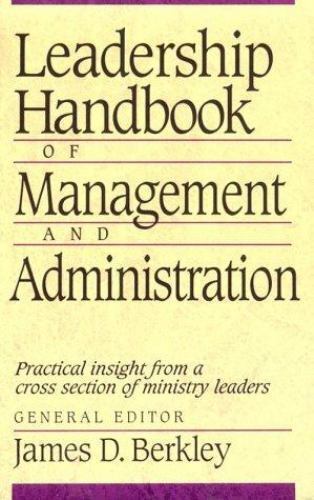
Excellence Through Equity: Five Principles of Courageous Leadership to Guide…

Excellence Through Equity: Five Principles of Courageous Leadership to Guide…
Price : 5.44
Ends on : N/A
View on eBay
Excellence Through Equity: Five Principles of Courageous Leadership to Guide SuccessIn order to achieve excellence through equity, it is crucial for leaders to embody and uphold five key principles of courageous leadership. These principles serve as a guide for creating a more inclusive and equitable environment in which all individuals can thrive and succeed. By embracing these principles, leaders can foster a culture of belonging, empowerment, and opportunity for all.
1. Commitment to Equity: Leaders must demonstrate a strong commitment to equity by actively acknowledging and addressing systemic barriers and biases that exist within their organization. This requires a willingness to listen, learn, and take action to ensure that all individuals have equal access to opportunities for success.
2. Cultivating Diversity: Embracing diversity in all its forms is essential for creating a truly equitable environment. Leaders should work to build a diverse team that reflects the broad range of perspectives, experiences, and backgrounds present in society. By valuing and celebrating diversity, leaders can foster a culture of inclusion and belonging.
3. Empowerment Through Education: Providing education and training on equity issues is crucial for empowering individuals to advocate for themselves and others. Leaders should invest in ongoing education and development opportunities that help individuals understand and address issues of bias, privilege, and discrimination.
4. Building Relationships: Developing strong relationships based on trust and respect is key to creating an inclusive and equitable workplace. Leaders should actively engage with employees, stakeholders, and community members to build connections and foster a sense of belonging. By prioritizing relationships, leaders can create a supportive and collaborative environment where everyone feels valued and heard.
5. Accountability and Action: It is not enough to simply talk about equity – leaders must take concrete actions to address inequities and create meaningful change. This requires holding oneself and others accountable for upholding equitable practices and policies, and taking proactive steps to address issues of bias and discrimination. By setting clear goals, measuring progress, and holding themselves to high standards, leaders can drive meaningful and lasting change towards excellence through equity.
In conclusion, by embodying these five principles of courageous leadership, leaders can create a more inclusive, equitable, and successful organization that empowers all individuals to reach their full potential. Excellence through equity is not just a goal to aspire to – it is a responsibility that all leaders must embrace in order to create a more just and equitable world for future generations.
#Excellence #Equity #Principles #Courageous #Leadership #Guide..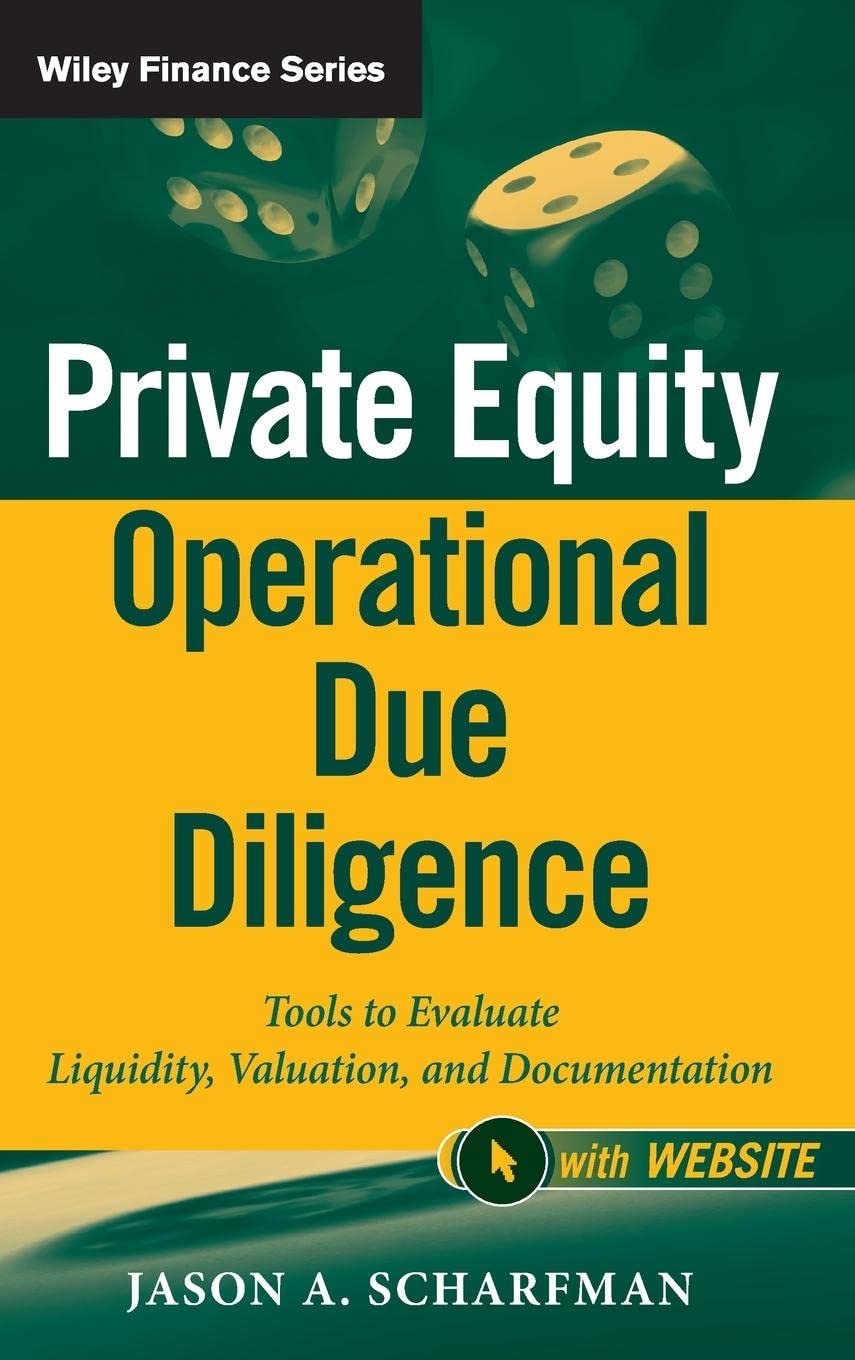
Private Equity Operational Due Diligence, + Website: Tools to Evaluate Liquidity, Valuation, and Documentation
Price:$100.00– $42.81
(as of Dec 28,2024 11:34:51 UTC – Details)
Publisher : Wiley; 1st edition (April 10, 2012)
Language : English
Hardcover : 400 pages
ISBN-10 : 111811390X
ISBN-13 : 978-1118113905
Item Weight : 1.35 pounds
Dimensions : 6.1 x 1.4 x 9 inches
Private Equity Operational Due Diligence is a crucial aspect of evaluating potential investments in private equity funds. By conducting thorough due diligence on the operational aspects of a fund, investors can gain insight into the fund’s liquidity, valuation, and documentation practices.To aid investors in this process, we have compiled a list of useful tools and resources available on our website. These tools can help investors evaluate the operational aspects of private equity funds, enabling them to make informed investment decisions.
1. Liquidity Analysis Tool: Our liquidity analysis tool allows investors to assess the liquidity of a private equity fund’s investments. By inputting relevant data, investors can determine the fund’s ability to meet redemption requests and manage cash flow effectively.
2. Valuation Assessment Tool: Our valuation assessment tool helps investors evaluate the valuation practices of a private equity fund. By analyzing the fund’s valuation methods and processes, investors can gauge the accuracy and reliability of the fund’s reported valuations.
3. Documentation Checklist: Our documentation checklist provides investors with a comprehensive list of documents that should be reviewed during operational due diligence. By ensuring that all necessary documentation is in place and up to date, investors can mitigate risks and make more informed investment decisions.
By utilizing these tools and resources, investors can conduct thorough operational due diligence on private equity funds, ultimately improving their ability to assess investment opportunities and manage risks effectively. Visit our website today to access these valuable tools and enhance your due diligence process.
#Private #Equity #Operational #Due #Diligence #Website #Tools #Evaluate #Liquidity #Valuation #Documentation


